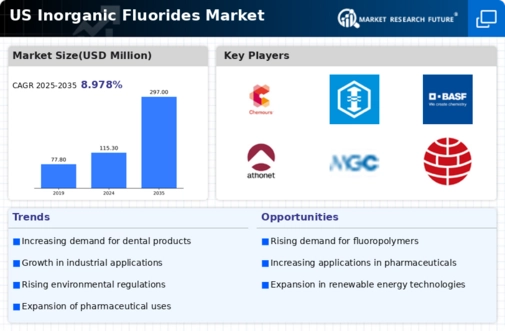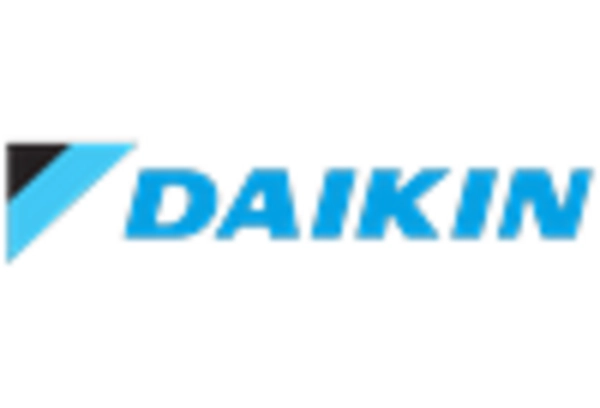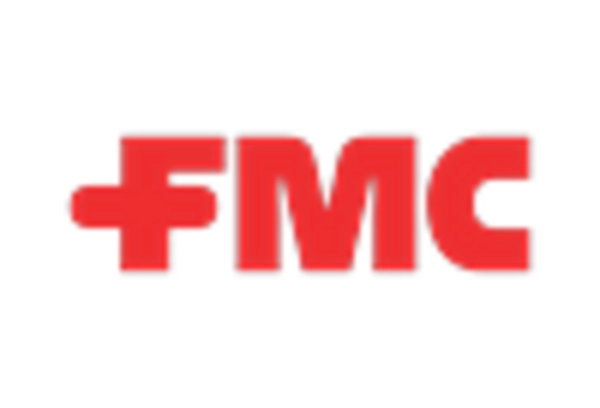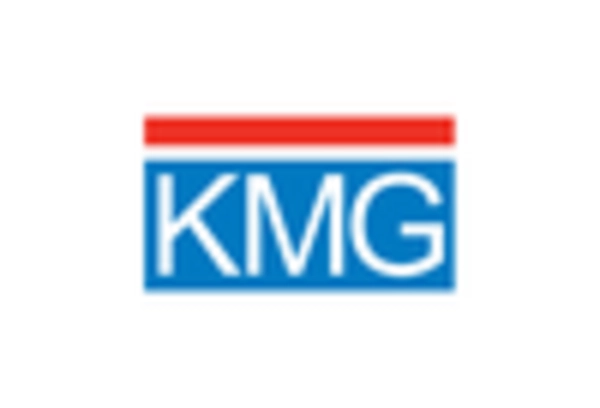The inorganic fluorides market is characterized by a competitive landscape that is increasingly shaped by innovation, sustainability, and strategic partnerships. Key players such as Honeywell International Inc (US), Albemarle Corporation (US), and Chemours Company (US) are actively pursuing strategies that emphasize technological advancements and operational efficiencies. Honeywell International Inc (US) has focused on enhancing its product portfolio through research and development, aiming to meet the growing demand for high-performance materials. Meanwhile, Albemarle Corporation (US) has been expanding its global footprint, particularly in emerging markets, to capitalize on the rising demand for lithium-ion battery materials, which often utilize inorganic fluorides. Chemours Company (US) is also positioning itself as a leader in sustainable solutions, leveraging its expertise in fluorine chemistry to develop environmentally friendly products, thereby influencing the competitive dynamics of the market.
In terms of business tactics, companies are increasingly localizing manufacturing and optimizing supply chains to enhance responsiveness to market demands. The market structure appears moderately fragmented, with several players vying for market share. However, the collective influence of major companies like Honeywell, Albemarle, and Chemours suggests a trend towards consolidation, as these firms seek to leverage economies of scale and enhance their competitive edge.
In September 2025, Honeywell International Inc (US) announced a strategic partnership with a leading battery manufacturer to develop advanced fluorinated materials for next-generation batteries. This collaboration is expected to enhance Honeywell's position in the energy storage sector, aligning with the growing trend towards electrification and renewable energy solutions. The strategic importance of this partnership lies in its potential to drive innovation and expand market reach, particularly in the rapidly evolving battery technology landscape.
In October 2025, Albemarle Corporation (US) unveiled a new production facility dedicated to the manufacturing of lithium fluoride, a critical component in battery applications. This facility is anticipated to significantly increase Albemarle's production capacity, enabling the company to meet the surging demand for electric vehicle batteries. The establishment of this facility underscores Albemarle's commitment to investing in high-growth sectors and reinforces its competitive positioning in the inorganic fluorides market.
In August 2025, Chemours Company (US) launched a new line of sustainable fluorinated products aimed at reducing environmental impact. This initiative not only aligns with global sustainability goals but also positions Chemours as a frontrunner in the development of eco-friendly solutions. The strategic importance of this launch is multifaceted, as it enhances brand reputation and meets the increasing consumer demand for sustainable products, thereby potentially increasing market share.
As of November 2025, the competitive trends in the inorganic fluorides market are increasingly defined by digitalization, sustainability, and the integration of advanced technologies such as AI. Strategic alliances are becoming more prevalent, as companies recognize the need to collaborate to drive innovation and enhance operational efficiencies. Looking ahead, competitive differentiation is likely to evolve from traditional price-based competition towards a focus on innovation, technological advancements, and supply chain reliability. This shift suggests that companies that prioritize R&D and sustainable practices will be better positioned to thrive in the dynamic landscape of the inorganic fluorides market.

















Leave a Comment